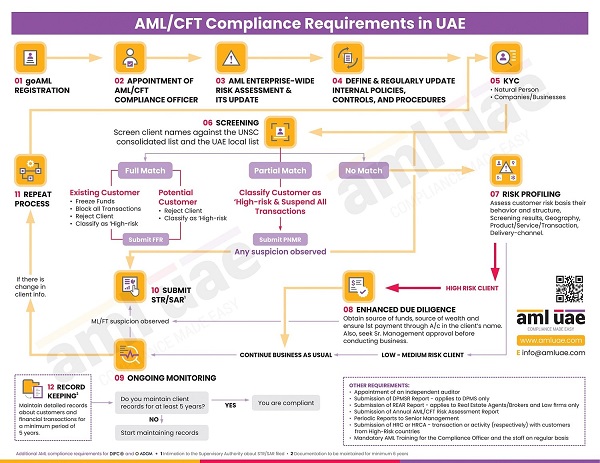What are FATF Blacklist and Grey list countries?
The Financial Action Task Force (FATF) is an independent agency that works internationally to prevent money laundering and financing. It provides several recommendations for governments that help them to make their AML compliance framework sturdy and robust. FATF has issued a blacklist. This backlist mentions the names of the countries which do not cooperate in the global efforts to prevent financial crimes such as money laundering, financing of terrorism, and financing of proliferation of weapons for mass destruction.
While the other list issued is the grey list of countries where the AML regulations are not entirely compelling and efficient enough to counter money laundering and terrorism financing.

About the FATF Blacklist and Grey list
FATF Blacklist 2024
What is FATF Blacklist?
The FATF Blacklist enlists the countries that do not have an efficient AML system or instead do not intend to control financial crimes. Their trade activities are not guided to prevent money laundering, financing of terrorism, or proliferation financing. Their AML frameworks are insufficient to deal with the global threat of money laundering. Their trade activities also put other countries at risk of financial fraud and jeopardized their economic system.
The FATF blacklist countries are officially known as High-Risk Jurisdictions subject to a Call for Action, which acts as a deterrent for countries doing business with the listed countries because of their non-cooperation in the global fight against financial crimes. The FATF blacklist makes other countries aware of the status of the blacklisted country, and they know that doing business with such a country or person hailing from these countries would be dangerous for their economy and the global economy.
With the FATF black list, the countries know which countries they need to put on the sanction lists, which helps their business organizations understand which countries they should not do business with. When FATF has deemed the blacklisted countries insufficient, other countries should cut off ties with the blacklisted countries until they improve their AML frameworks and satisfy the FATF criteria of being AML compliant, sufficient enough to remove their name from the FATF blacklist.
Please note that the FATF updates the blacklist annually or sometimes biannually, so businesses must continuously check them for new listing and delisting. The number of countries on the blacklist varies depending on the effectiveness of the AML compliance framework – if the blacklisted countries have improved their AML efforts to curb the evils of financial crimes. The FATF analyze the same and makes an informed decision about their continued listing or delisting. The FATF continuously monitors the country’s contribution and efforts to check on financial crimes and gathers reliable information on which the listing process is based.
As FATF does not have direct powers to ban a country from conducting business with other countries, its issuance of a blacklist is a recommendation to other countries dealing with a blacklisted country – not to continue such trade as it will put their business and the country’s financial system at risk.
At present (February 2024), only the Democratic Republic of North Korea, Iran and Myanmar are mentioned in the FATF blacklist – countries subject to a Call for Action.
FATF Grey List 2024
What is FATF Grey List?
Along with the blacklist, the FATF also issues the grey list, which enlists FATF Grey List countries with a higher risk of money laundering and terrorism financing (yes, definitely less than the blacklisted countries). These countries are put on the grey list because FATF is assured that they are working towards improving their AML compliance structure.
The main difference between the countries mentioned on the blacklist and the FATF grey list is that the former shows no signs of making an effort toward the AML compliance structure. At the same time, the latter follows the FATF recommendation to fix the issues in their AML compliance and regulatory framework.
The FATF scrutinizes the grey list countries regularly to check the specified countries’ progress towards an efficient AML compliance framework. The FATF assesses the progress of the countries on the grey list. At present (as of February 2024), 21 countries are on the FATF Grey list, including Nigeria, Croatia, Namibia, Kenya, Syria, Vietnam, Turkiye, and many more.
The FATF Grey List is also updated frequently, and de-listings and new additions are made based on the performance of the countries and the thorough analysis done by the FATF basis various parameters.
On 23rd February 2024, UAE was removed from the FATF Grey List, a list also known as jurisdiction under increased monitoring list, which includes countries that are actively working with the FATF to address strategic deficiencies in their regimes to counter money laundering, terrorist financing and proliferation financing.
Click here to get updated FATF Blacklist and Grey list
What is the difference between FATF blacklisted countries and greylisted countries?
Let us understand the difference between the FATF black list and the FATF grey list. The FATF blacklisted countries or jurisdictions suffer from strategic deficiencies in combating money laundering, terrorist financing, and financing the proliferation of weapons of mass destruction. The FATF blacklisted jurisdictions are subject to enhanced due diligence and sanctions to protect the global financial system from the risks of money laundering, terrorist financing, and proliferation financing.
The FATF Greylisted countries are the jurisdictions working closely with the FATF to address strategic deficiencies in their regimes to counter money laundering, terrorist financing, and proliferation financing. The Greylisted jurisdictions are committed to resolving the identified issues within agreed timeframes and are subject to increased monitoring.
How many countries are part of FATF?
FATF, as of 27th October 2023, is composed of 40 members, with the latest addition of Indonesia. It relies on FATF-Style Regional Bodies (FSRBs) to achieve its goals and objectives. As of now, there are 9 FSRBs working closely with the FATF. Over 200 jurisdictions around the world have committed to the FATF recommendations through the global network of FSRBs and FATF membership.
What happens if FATF blacklists a country?
Once a country is placed on the FATF blacklist, the FATF member states and other international bodies will impose sanctions and restrictive measures against the blacklisted country. The blacklisted country can experience a negative impact on its economy as the economic sanctions imposed by various countries and global financial institutions will make it difficult for a blacklisted country to secure funds.
Further, the blacklisted country will experience declining international trade and foreign exchange inflows. International trade will become costly, and the blacklisted country’s banking system will find it difficult to survive.
Why North Korea is blacklisted by the Financial Action Task Force (FATF)
The Financial Action Task Force (FATF) has blacklisted North Korea because the Democratic People’s Republic of Korea (DPRK) has failed to address the deficiencies in its money-laundering and terrorist financing (AML/CFT) regime, and it poses serious threats to the integrity of the global financial system. The FATF has serious concerns about North Korea’s illicit activities related to the proliferation of weapons of mass destruction (WMDs) and its financing.
Is Russia on FATF blacklist?
As of February 2024, Russia is not on the FATF blacklist. The Russian Federation is also not part of the FATF grey list. Instead, the FATF has suspended Russian Federation’s membership and asked countries to remain vigilant for the emerging risks and apply necessary measures to mitigate the risks.
FATF Grey List, Blacklist, and AML Compliance
The FATF Grey List and Blacklist serve as a guiding light for businesses to assess the risks associated with jurisdictions and customers. The regulated entities take a risk-based approach and decide if the risks posed by a customer are within its risk appetite. The FATF lists for jurisdictions subject to a call for action, and jurisdictions under increased monitoring undergo review and change 3 times a year.
Are grey list countries high risk?
FATF grey list countries have a strategic deficiency in their AML/CFT regime, and depending on the risk-based approach taken by an entity, grey list countries are treated as high-risk countries.
Are blacklist countries high risk?
Yes, countries on the FATF black list are high-risk countries for money laundering, terrorist financing, and proliferation financing.
FATF Blacklist and Grey list - Screening & monitoring process
Financial institutions and the designated non-financial businesses and professions, including virtual asset service providers, must continuously monitor their customer databases against FATF Blacklist and Grey list countries.
The screening will help them be alert against the non-cooperative countries that are not taking the AML compliance process seriously. It will protect them from doing business with such countries, which can cause financial losses and reputational damage. So, continuous monitoring is necessary to protect a nation’s financial system from the risk of money laundering and non-compliance with the AML laws and regulations.

So, they should keep the identity verification, Customer Due Diligence, and Enhanced Due Diligence process updated and screen the customers regularly against the sanction lists, the FATF blacklist, and the grey list. Identification of suspicious transactions and accounts should be immediately reported to the authorities. With the timely submission of STRs and SARs – institutions will contribute to and help strengthen the fight against money laundering and financing of terrorism.
Our timely and accurate AML consulting services
For your smooth journey towards your goals
Our recent blogs
side bar form
Share via :
FAQs About the FATF Blacklist and Grey list
About the Author
Jyoti Maheshwari
CAMS, ACA
Jyoti has over 7 years of hands-on experience in regulatory compliance, policymaking, risk management, technology consultancy, and implementation. She holds vast experience with Anti-Money Laundering rules and regulations and helps companies deploy adequate mitigation measures and comply with legal requirements. Jyoti has been instrumental in optimizing business processes, documenting business requirements, preparing FRD, BRD, and SRS, and implementing IT solutions.
